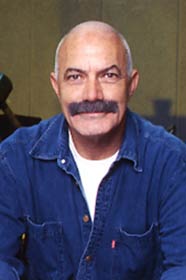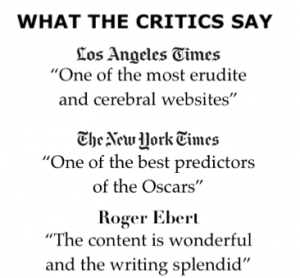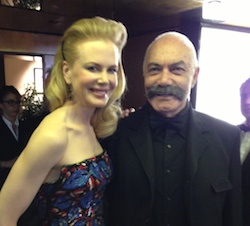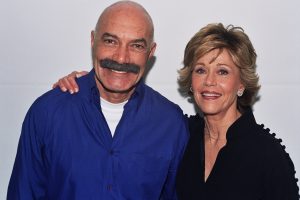Bellochio: Why His Competition Film ‘Kidnapping’ Needed to Be Italian

In 2021, the French festival gave him an honorary Palme d’Or for lifetime achievement.
Bellocchio’s latest feature, Kidnapping, marks his eighth time in Cannes competition.
Set in 1858, the film traces the true story of Edgardo Mortara, Jewish boy in Bologna secretly baptized by his nurse as a baby, thus transforming his fate.
Back then, papal law for territories on the Italian peninsula under the direct rule of the Pope required all baptized children, regardless of religious heritage, to receive a Catholic education. When the boy turned 7, he was seized by the Pope’s soldiers and raised by the Church. But the boy’s family, with the support of public opinion and the international Jewish community, fight to get their child back.

In an interview, Bellocchio discussed American directors who considered making the film, his personal evolution, making politically militant cinema, and his family.
What aspect of story attracted you?
I didn’t spend too much time investigating my motives but when I read about this kidnapping, I read about Edgardo Mortara, I also read that an illustrious colleague, Spielberg, wanted to do this story. And then, mysteriously he didn’t want to do it anymore.
How Spielberg would have made it?
I think it’s a film that needed to be done in the Italian language. It needed Italy. Maybe Spielberg felt it would be difficult to get to know Italy, and maybe that’s why he put it aside. And it wasn’t just Spielberg. Julian Schnabel also wanted to do this project.
Funding?
We had many problems, too, but at a certain point, we found enough money to be able to do it, thanks also to the tax credit in Italy, which helped a lot.
There’s mother who wants to defend her son’s Jewish heritage and his religion – their God. There is the Catholic God. And then this brutal event, taking the child away and bringing him to Rome to re-educate him. The sense, the meaning, the path of this child, who was re-educated and converted — the working title of the film was The Conversion — is of someone who accepts his fate in order to survive. But there is a moment at the center of the film in which he tries, through his own imagination, to attempt to reconcile the two religions. He tries to remove the nails from Christ precisely to reconcile the two religions, precisely to return to his origins, to return to his mother. The most powerful figure for the child is the mother. Because the father, deep down, would be willing, if it meant seeing his child again, to accept some sort of compromise with the Catholic Church. The mother, absolutely not.
When the child is kidnapped, he seems to accept the new religion, new father, because there are no mothers. However, in writing the script with Susanna Nicchiarelli, we have sudden outbursts from the child and the teenager, which reveal he’s not so peaceful.
An example, taken from Edgardo Mortara’s biography, which he doesn’t explain but I show in the film, is the moment when the adolescent, the young man, the young seminarian, out of excessive love for the Pope, almost knocks him over. The Pope punishes him in a rather atrocious way. There is still something in him that has definitively not been extinguished.
Does he risk knocking him over?
He wants to! We enter into an area we know well, in which there are no certainties, but I wanted to represent him with strong ambiguity. During the film, he has an awakening, there’s a rebel in him. While visiting his father, he is docile, cold. With his mother instead, he returns to something like the affection of the earlier scenes. He rebels, and then he looks for type of childlike reconciliation.

There is secular part that made me move away. I came to Rome, I had my experiences. But with my brother Pier Giorgio, who died last year – and then I presented his beautiful book, “Diario del Novecento” – with him, in terms of ideas and choices, there was strong compatibility. Even though his life was more of someone who retired in small provincial town and remained there, a strong disassociation between life and thought.
Connection in the dialogue between the brothers about religion, about having a God
In the case of Mortara, there are nine. We were eight.
Family having central importance in life?
Yes, it was central. Clearly, for all my life, and I carry the marks from it… you have captured the point perfectly. The family, the games is something that in a different way we did too, as children. We also played hide and seek … These were games in which we were all involved, maybe there were also our neighbors, and we played because there was no television yet, we played in that time because we had dinner quite early, before going to bed. I also found paintings about this, from the 1800s, and games referenced by psychiatry, the game of peek-a-boo, hiding, uncovering, the blindfold from famous painting by Goya.
Theme of hiding and seeing oneself
Yes, the blind spot strikes me, or the blind point, It’s a concept, sudden blindness in which a tragedy can happen.
Way of showing Italy as it is and as it could have been
I never accepted the inexorability of history. History went a certain way. Without betraying it too much I looked for – not so much for a counterbalance but for movements of contrast, of rebellion. In this film, there’s a child who suddenly stirs up reality…
Is even death ineluctable?
Death, I think, is ineluctable. I always say, I know it’s a cliché, to use the time you have wisely. So far I’ve been helped by luck, I’m lucky to still have a mental vitality, also a certain health.










